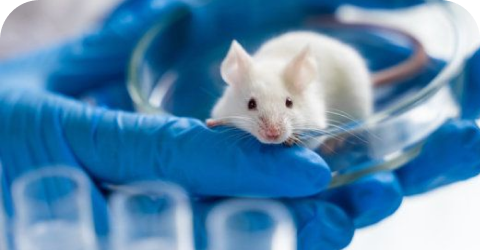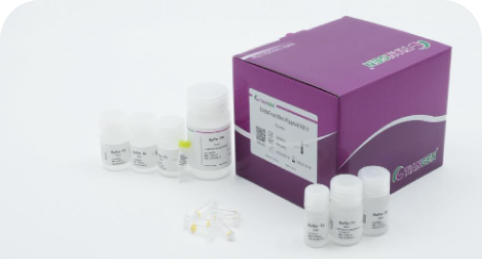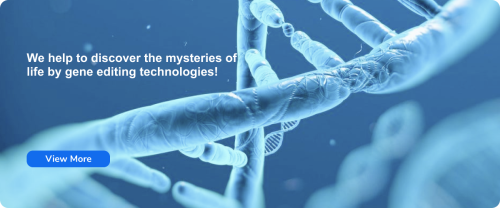What is Bone Cancer Pain?
Cancer-induced Bone Pain (CIBP) or Bone Cancer Pain (BCP) is a type of pain caused by the invasion of tumors (such as primary bone tumors or bone metastases from breast cancer, prostate cancer, bladder cancer, lung cancer, etc.) into the bones [1]. This pain can severely impact a patient’s mental state and quality of life when it becomes intense [2]. Studies have shown that about 75% of patients with advanced cancer experience moderate to severe pain, but more than half of these patients are unable to find relief with existing drug treatment options [3].
The mechanisms of bone cancer pain are complex, involving inflammatory, nociceptive, and neuropathic components. These processes include tumor growth, bone destruction, and the transmission of pain signals [4].
Relevant Animal Models
Animal models of bone cancer pain are invaluable tools for researchers to gain a deeper understanding of the biological mechanisms underlying bone cancer pain and to develop targeted drugs and therapeutic strategies.
These models typically involve injecting specific cancer cell lines, such as osteosarcoma cells or breast cancer cells, into the bones of animals to induce bone cancer lesions. As the tumor grows, the animals exhibit symptoms similar to human bone cancer pain, including spontaneous pain, hyperalgesia, limping, and anxiety. Currently, over 18 different cell lines have been used to establish bone cancer pain models in rats or mice, including NCTC 2472, ACE-1, Lewis 256, 66.1, 4T1, and B16-F10 etc. [2][6]
Our Service and Case Study
We have successfully established a bone metastasis cancer model by injecting MDA-MB-231 cells into the femoral bone marrow of BALB/c nude mice. The cancer pain behaviors exhibited by these mice were then evaluated. After injection, the tumor cells showed stable growth within the mice.
Cancer Pain Behavior Observations
- Day 14 (D14): By day 14 post-injection, some tumor-bearing mice began to exhibit cancer pain symptoms such as spontaneous pain, mechanical allodynia, thermal hyperalgesia, and pain during walking.
- Day 21 (D21): By day 21, all tumor-bearing mice showed symptoms of spontaneous pain, mechanical allodynia, and pain during walking. Based on the severity of pain, the tumor-bearing mice were divided into two groups. One group received Gabapentin treatment for 7 days (20 mg/kg, intraperitoneally, once daily).
- Day 28 (D28): After 28 days, the treatment group showed alleviation in symptoms of spontaneous pain and mechanical allodynia, but there were no significant changes in pain during walking and thermal hyperalgesia compared to before treatment.
How to Order
• Email Us: service.us@modelorg.us; info@genobiotx.com
• Direct Contact: Reach out directly to your Business Development Manager
Partner with GenoBioTX today!
Experience a significant boost in your research efficiency and success. Let’s accelerate your breakthroughs together!
For more information or to place an order, contact us today!
Reference:
[1]. Weilbaecher, K. N., Guise, T. A., & McCauley, L. K. (2011). Cancer to bone: a fatal attraction. Nature reviews. Cancer, 11(6), 411–425. https://doi.org/10.1038/nrc3055.
[2]. Yang, L., Liu, B., Zheng, S., Xu, L., & Yao, M. (2023). Understanding the initiation, delivery and processing of bone cancer pain from the peripheral to the central nervous system. Neuropharmacology, 237, 109641. https://doi.org/10.1016/j.neuropharm.2023.109641.
[3]. Wang, K., Donnelly, C. R., Jiang, C., Liao, Y., Luo, X., Tao, X., Bang, S., McGinnis, A., Lee, M., Hilton, M. J., & Ji, R. R. (2021). STING suppresses bone cancer pain via immune and neuronal modulation. Nature communications, 12(1), 4558. https://doi.org/10.1038/s41467-021-24867-2.
[4]. Gadepalli, A., Akhilesh, Uniyal, A., Modi, A., Chouhan, D., Ummadisetty, O., Khanna, S., Solanki, S., Allani, M., & Tiwari, V. (2021). Multifarious Targets and Recent Developments in the Therapeutics for the Management of Bone Cancer Pain. ACS chemical neuroscience, 12(22), 4195–4208. https://doi.org/10.1021/acschemneuro.1c00414.









